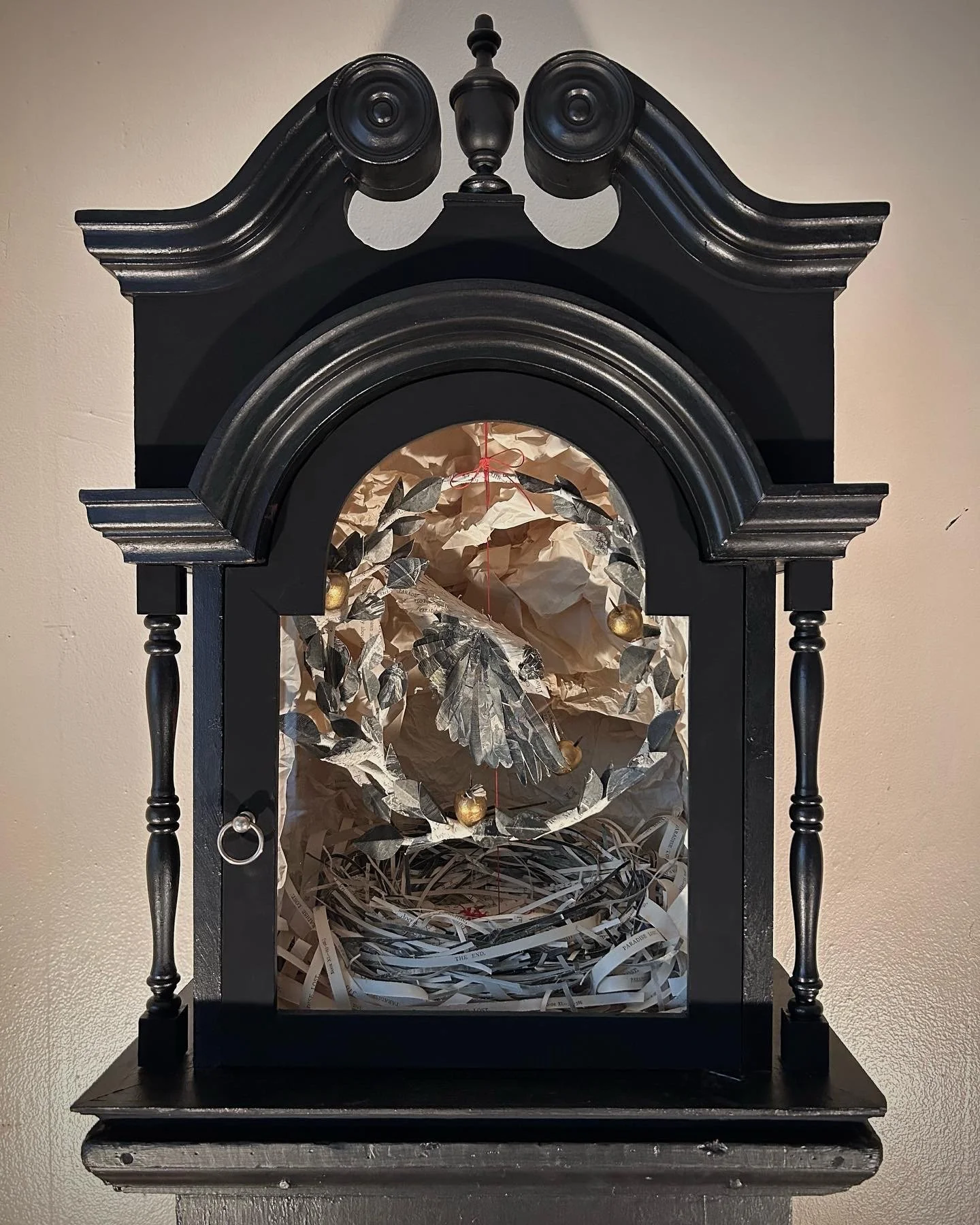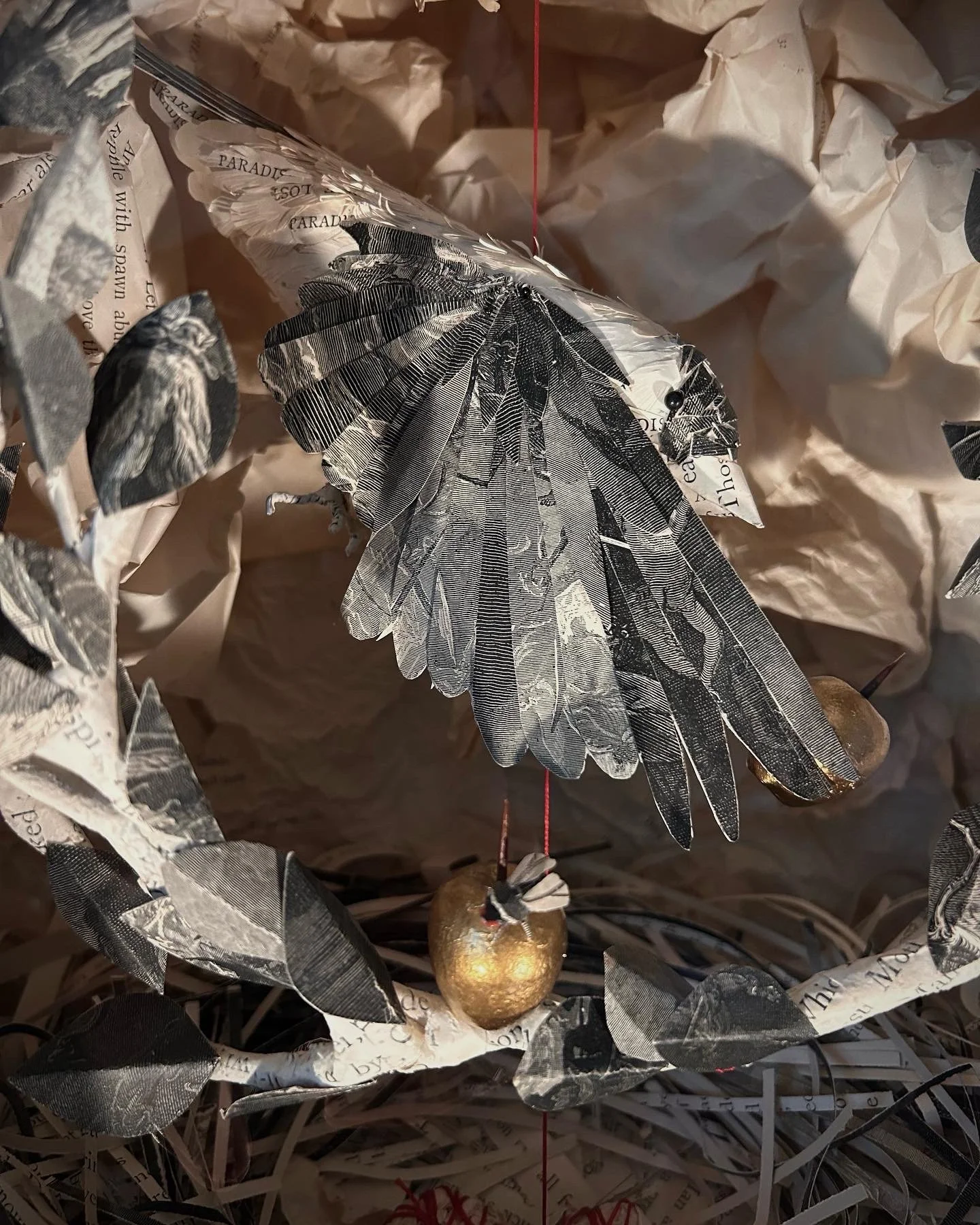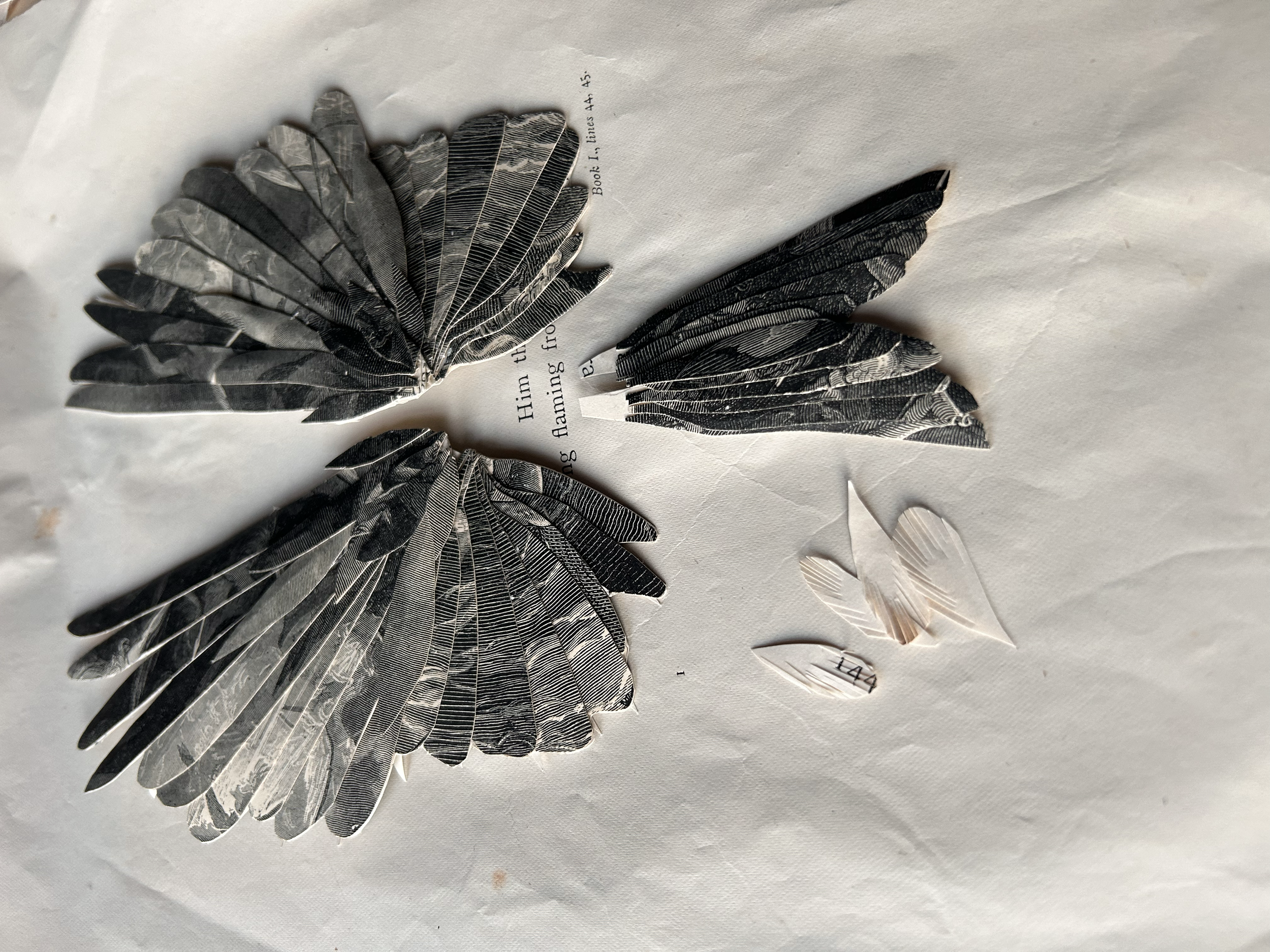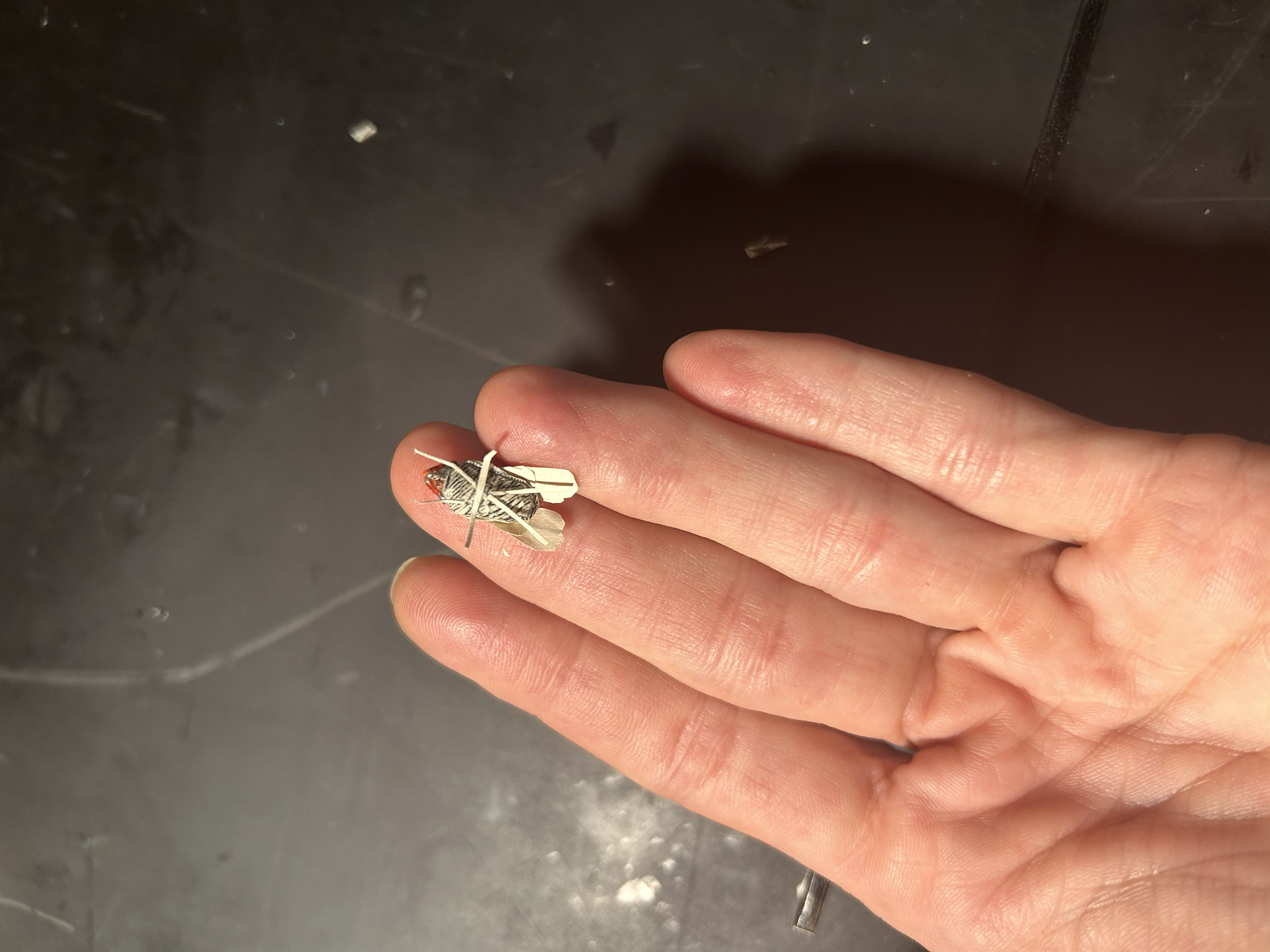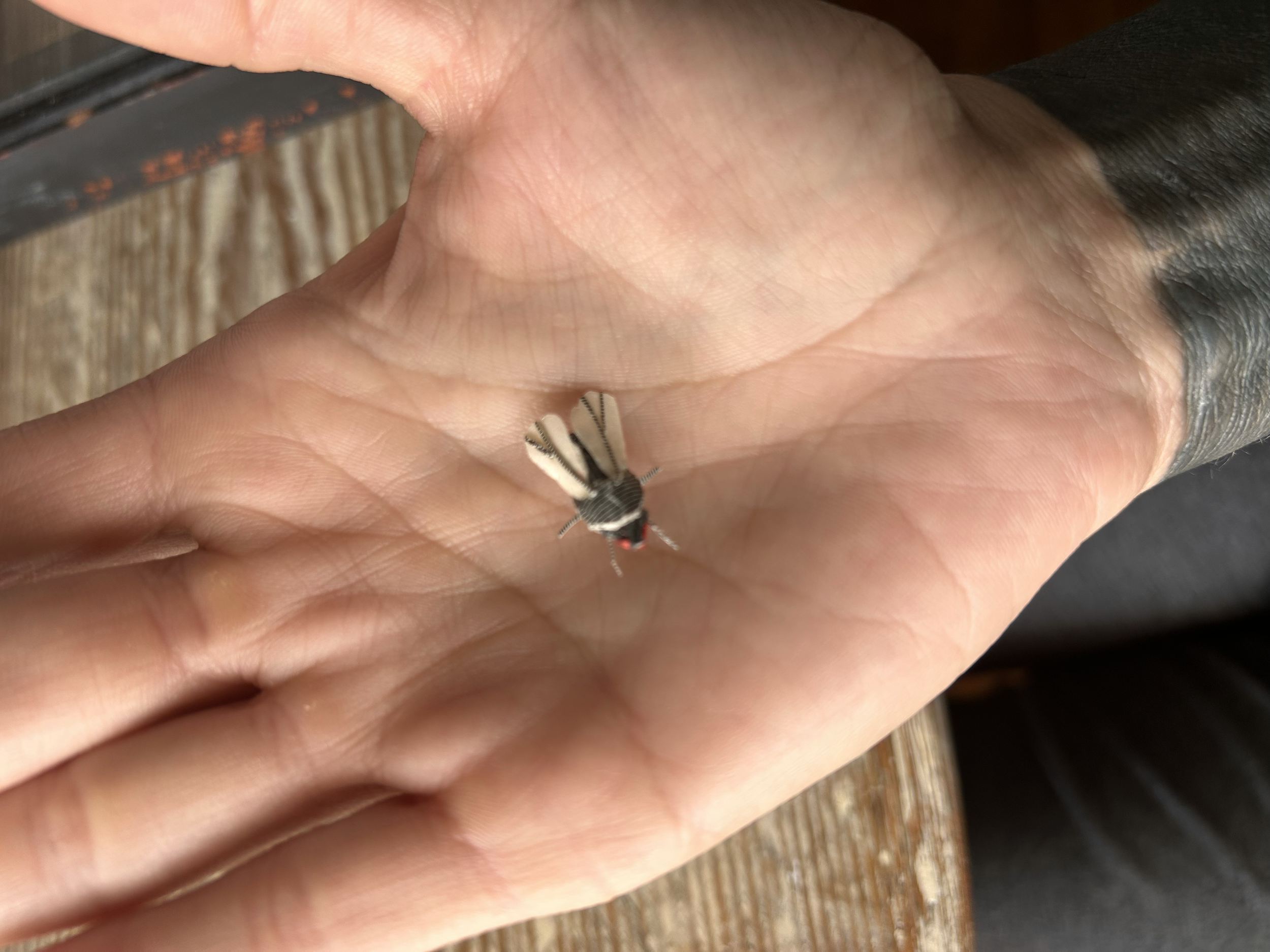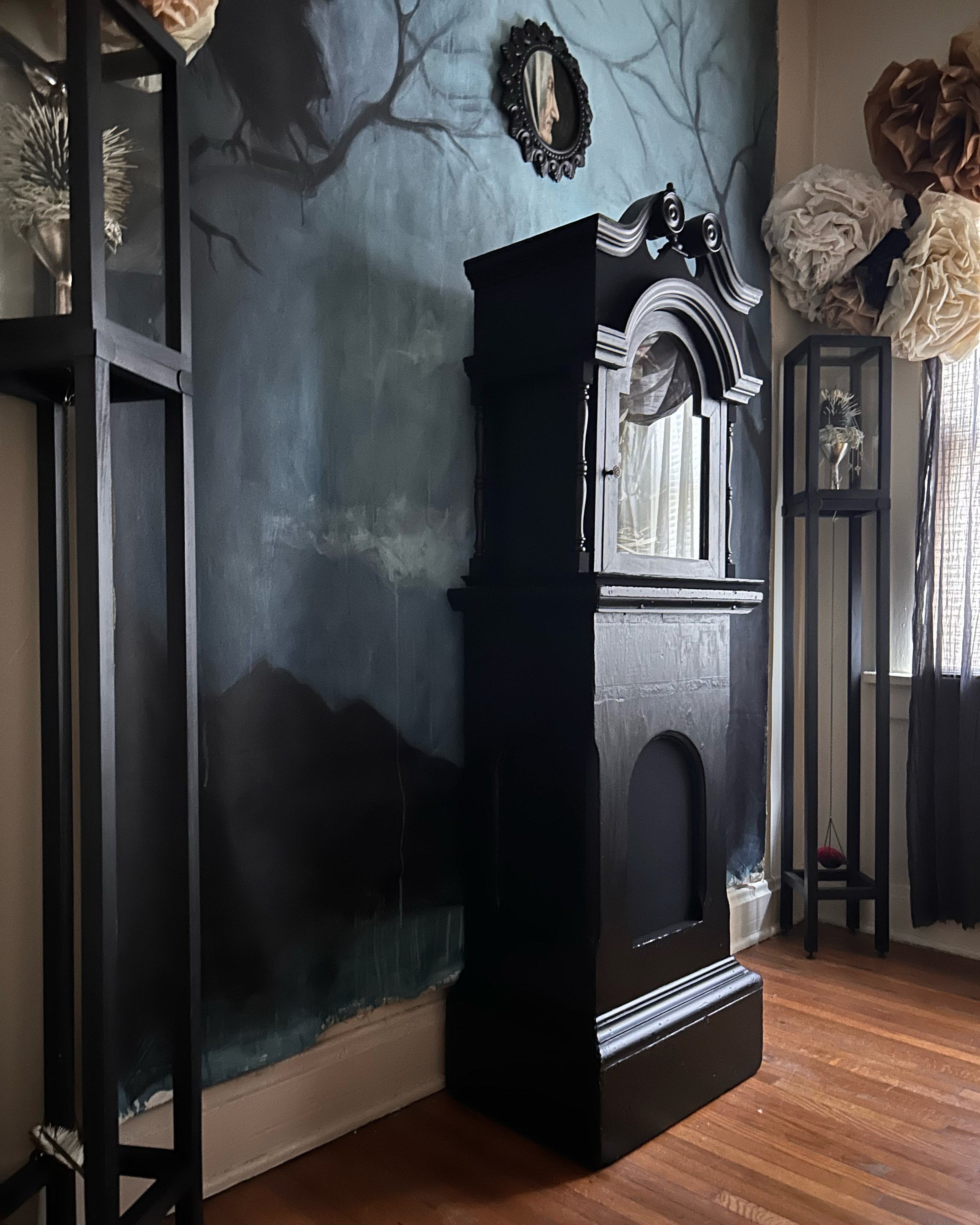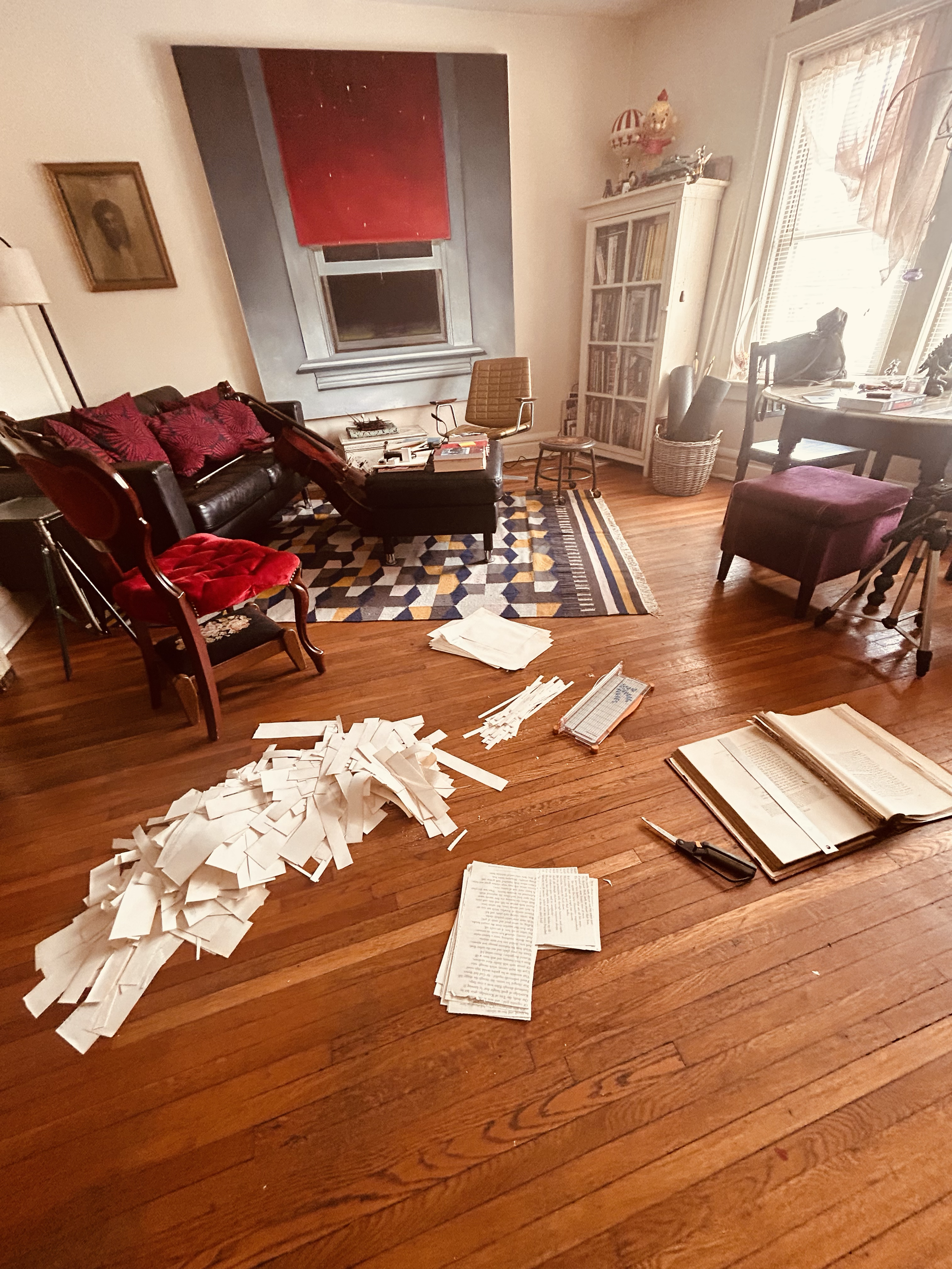Paradise Lost: Felix Culpa
2023
During my research for my 2-week artist residency in Orquevaux France, I discovered that Denis Diderot, during one of his periods of incarceration, was only allowed to have one book. He chose Milton's epic poem, Paradise Lost. This intrigued me because Diderot rejected the clergy and proclaimed himself an atheist. Wanting to understand his choice, I delved into an 1866 edition of Paradise Lost, which was illustrated by Gustav Dore. I explored the symbolic elements present in the poem.
Understanding the complex nature of the book, I sought additional help. I engaged in conversations with professors of literature and psychologists, which proved to be extremely beneficial and contributed to my project.
This work serves as counterpart to The Nun.
Simplifying Symbolism in Art
In my artistic representation of sin and redemption, I utilized reinforced Dore illustrations and their title pages to create a goldfinch. Traditionally, the goldfinch symbolizes the savior, and I incorporated excerpts from book 12 within this bird. To further enhance the composition, I constructed a nest using illustrations, title pages, and a portion of book 1.
To add depth and texture to the artwork, I shaped illustration pages into clouds and crafted a wreath made from book 2 and its accompanying illustrations. Inside the nest, I included two rolled title pages, resembling eggs, which I carefully wrapped in red string. Finally, I created an anthill using the remaining books and incorporated a pendulum filled with a portion of book 1. The pendulum was adorned with three Dore illustrations, symbolizing the time before the fall. The entire composition was encased to preserve its intricate beauty.
Throughout art history, the fly has long been regarded as a symbol for sin, while the goldfinch represents the savior. Ancient Greek mythology adds to this symbolism with the tale of the tree of golden apples of immortality. According to the myth, Zeus gifted his wife Hera with the tree for her renowned garden of Hesperides. In this garden, the beastly Ladon was assigned to guard the golden apples. As one of Hercules' twelve labors, he was tasked with defeating Ladon and stealing the apples. In my interpretation, I viewed the golden apples as unbroken wishbones, holding the potential for one's desires and imagination.
An intriguing addition to my project was the anthill. The inspiration for this concept stemmed from my visit to the Trinity Test Site in New Mexico earlier this year. At this site, I discovered tiny pieces of tumbled trinitite in anthills. This connection added another layer of significance to the artwork, symbolizing the blending of natural elements with the themes of sin and redemption.
Overall, my artistic representation aimed to simplify the symbolism of sin and redemption using reinforced Dore illustrations, title pages, and excerpts from relevant books. By incorporating traditional symbolism, mythological references, and personal experiences, I aimed to create a thought-provoking composition that captures the essence of these themes.
𓆦
Materials:
Refurbished grandfather clock top case, antique staircase newel post, clay, honey locust thorns, waxed string, wire, gold leaf, trinitite, LED lights.


